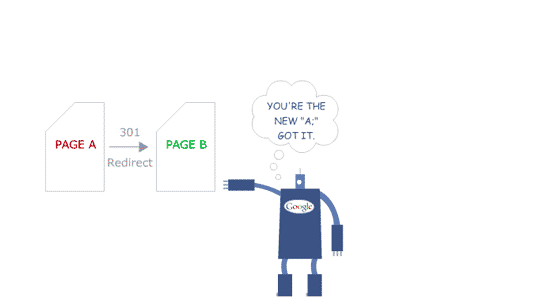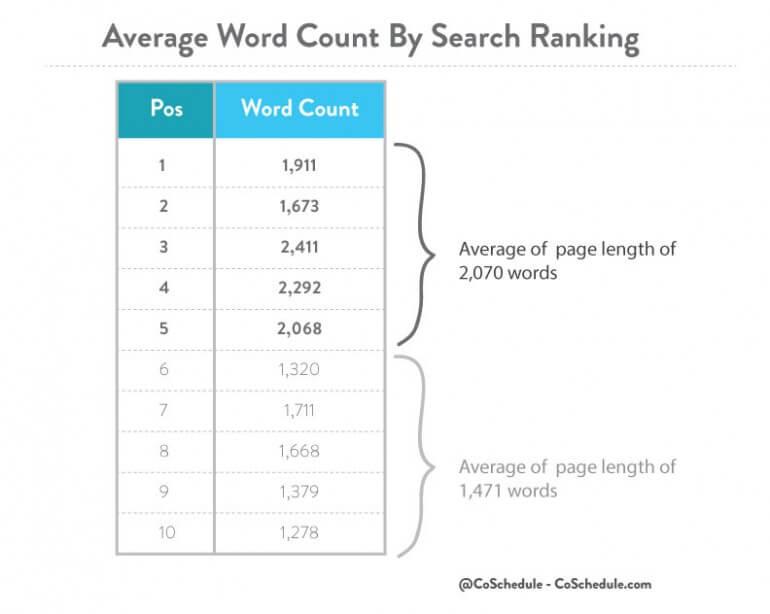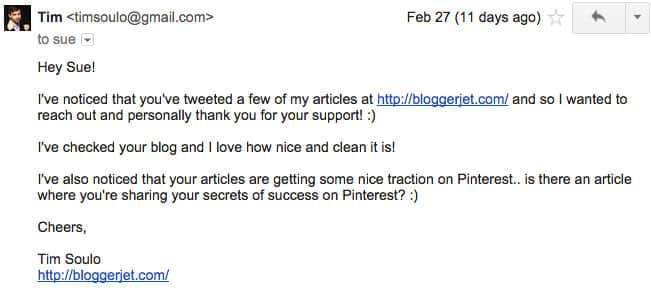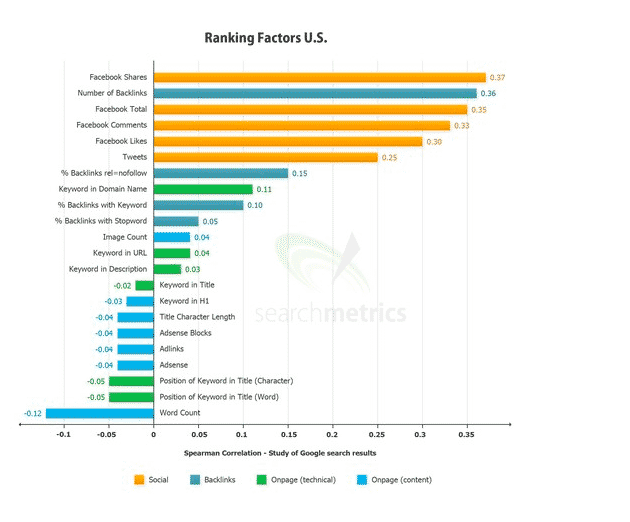Use powerful SEO techniques to improve your website’s rankings. Learn how to boost your visibility on Google and other search engines effectively.
If you have been interested in SEO for some time, you may already be familiar with the different types of SEO, which are mainly:
Once you start getting good results with White Hat SEO, you might want to try some alternative techniques to increase your SEO results very quickly. That's where Gray Hat SEO comes in.
Gray Hat SEO is mainly about questionable tactics that, for some of them, may one day turn into a black hat. You may consider these tactics to be somewhat risky, but they will give you great results if you practice them properly.
You can think of these techniques as “questionable techniques that don't offend your website visitors but work like a charm.” So there's nothing wrong with trying them out, especially if you're looking for desperate ways to increase your search engine traffic.
Without further ado, let's talk about the top 10 techniques you can use on your site to increase search traffic.
One of the most used techniques is the purchase of expired domains (also known as “domain grabbing”), which always works like a charm if done carefully.
Simply put, buying domains to improve your own website's SEO is known as domain grabbing. Domain grabbing is nothing new. Buying expired domains to improve your website's backlink profile is one of the most used SEO tactics by many people around the world.
Domain grabbing can be of two types.
The first is very popular because you can buy expired domain names from authority that already have a good backlink profile as well as some trustworthiness. When you buy these expired domain names to link to your blog posts or your home page, you're sure to get an improvement in your search engine rankings.
Although it's not recommended to buy a ton of expired domains just to increase your website's SEO. But by buying expired domain names that are very relevant and have a good backlink profile from time to time, it can certainly help you increase your website's ranking on search engines like Google.
Before you buy expired domains to improve your website rankings, here are a few key things you need to remember:
Here are some helpful tips for finding great expired domains to improve your website's SEO.
One of the easiest ways to find expired domains that are worth linking to is to determine their age.
If they have been registered for more than 3 years, they will certainly have a positive impact on search engines compared to recently purchased and expired domains. You can use WhoIs Domain lookup to find the age of the domain and other information about any expired domains.
Always make sure you spend time finding the backlink profile of expired domains, as most of them have messy backlink profiles that are either spammy or completely irrelevant to the context of the domain you're looking for.
There are numerous tools for analyzing a domain's backlink profile, including Semrush, Serpstat, Ahrefs, Monitor Backlinks, and more.
There are so many expired domains that consist of toxic backlink anchor texts that generally contain texts in Chinese, Russian, or other foreign languages that are useless for the SEO of your website. So avoid them if you're looking to buy expired domains that are good value for SEO.
La Wayback Machine, also known as the Internet Archive, is made up of over 300 billion historical web pages on the Internet, which is very useful for carefully analyzing any domain you want to buy.
Be sure to buy expired domains that already have more than 50 referring domains. This ensures that you are buying an expired domain that already has links from over 50 different sites on the Internet.
Quick tip: Here are a few places to find expired domains. Here you'll find a list of some of the best markets for finding and buying great expired domain names.
Once you've completed the search for large expired domains, it's time for you to redirect any purchased domains back to your main website.
This is where you should use the 301 redirect. What is it?
A 301 redirect is a redirection process in which a page is permanently moved to a new location such as a web page or website. It guides search engines like Google to redirect users to a new location on the page. More importantly, it delivers 90% of the link juice to the redirected page, making it a great way to buy expired domains to increase your website's SEO.
Here is a great illustration ofMoz's team on 301 redirects.

The illustration above explains that a 301 redirect tells search engine robots that the page has been moved permanently. Search engines interpret this to mean that not only has the page changed location, but that content can be found at the new URL.
You can simply use a 301 redirect plugin (free WordPress plugin) to redirect all expired domains that you purchased to your main website or the web page where you want to increase the authority of your links or your backlink profile.
Have you ever written articles that are more than 3000 words long? For example, one of the longest articles on my blog has over 16,000 words on best affiliate programs.
Most people don't know that long-form content is the most effective when it comes to getting more search engine traffic.
If you're in a competitive industry and you create 1000-word blog posts, start creating 2,000+ word blog posts for a month or two and you'll know why the long form of the content works well.
Yes, creating 2000-word articles seems like a lot of work, but they work like a charm.

Updating your blog posts with more content is one of the best techniques you can implement to increase your organic traffic.
The long form of the content has the following advantages.
So how do you increase the average length of the content of your articles? Here are a few tips that work great.
Before you start thinking about expanding your existing blog posts to increase your search traffic, make sure you know your goals.
Why do you want to detail it? Do you want more subscribers, more leads, more sales? Or do you just want to get more visitors from search engines?
Knowing your goals is the first step in content marketing success. Also, consider who the content is for and what goals you're trying to achieve once your content is updated. So you can easily track your results.
Figure out which topics are right for your target audience.
The best way to start is to work on your top 10 articles that bring you the most traffic from search engines.
Consult Google Analytics to know your main articles and start working on them by increasing the average length of their content.
Since the main articles are already bringing you traffic, updating them with more information, keywords, and images can attract even more search traffic.
We have been writing long content on this blog for a long time and we are sure of one thing: research is essential to create quality long content.
If you devote quality time to research, you will certainly discover many topics to discuss in your content, as well as references that you can use to create quality content.
So be sure to spend a lot of time researching your articles before you even start writing.
As you do your research, be sure to outline your blog posts as well.
You can use Google Docs to outline your content, make sure to include lots of subtitles using H2 and H3 tags so you can easily develop your contact so that you can easily create articles of over 2,000 words.
Web 2.0 is also a gray hat SEO technique, as users can generate, edit, and edit content using Web 2.0 directories, submission sites, forums, etc. Now let's talk about what it is and how you can use Web 2.0 for SEO and link building.
Web 1.0 (the first generation of the Internet) primarily uses static pages where users have no control over online information. Web 2.0 (the second generation) consists primarily of dynamic information where users can make changes to content to improve it.
For example, you can edit Wikipedia pages if you find something wrong on a page that you are more familiar with. This falls under web 2.0 because you have the possibility to modify the content.
Here is a great illustration of the difference between web 1.0 and web 2.0, which will allow you to easily understand the difference between the two.

Since web 2.0 allows content to be generated by users, it has the following advantages.
It's obvious that people use web 2.0 primarily to build links.
While most of the links you get from web 2.0 are nofollow, they're no less valuable, as you need diverse links to develop your backlink profile, because you can't build dofollow links alone.
And there are a few web 2.0 blog sites and directories that give you potential dofollow links as well that are great for increasing SEO and the rankings of your website.
Most user-generated platforms send you qualified visitors to your website, which is really great for increasing your website's overall conversion rates.
So be sure to spend time on platforms where most users are active (for example, platforms like Quora where you can also add links to your content).
Web 2.0 sites work best when you focus on increasing user engagement rather than getting traffic. So try to stay active on Web 2.0 platforms like Quora, Medium, or other social networking sites, instead of just promoting your articles to get more traffic or SEO benefits.
There is a huge debate that goes on every time someone talks about PBN. So let's talk about using PBN to see if you can use it to build effective links and increase your website's SEO.
PBN is short for Private Blog Network, which was once one of the most popular link building strategies. With the introduction of the Google Penguin update, most people stopped using PBN.
Here's a great podcast about PBN by SEO expert Neil Patel.
If you're building a Private Blog Network (PBN) using only duplicate content and irrelevant backlinks, then it's surely a Black Hat SEO technique, but if you're creating good content that's relevant to the topics you want to rank for, then you're doing well and that falls under Gray Hat SEO.
There are basically two ways to use PBNs for backlinks and SEO.
Here are some tips if you want to build your own PBN.
Everyone knows that keyword stuffing is a BAD SEO practice. But what if we said that careful keyword stuffing is good for increasing your organic traffic and search engine rankings?
Yes, keyword stuffing is bad and you should definitely avoid it at all costs, but if you maintain perfect keyword density, then you can reap the best results from your keyword optimization.
For example, if you're writing a 1000-word article, use your main keyword at least 3 to 4 times to increase its organic rankings. Be sure to use your main keyword in the following places;
We highly recommend that you start using a great optimization plugin like Yoast SEO that offers great features to easily optimize your content for the desired keywords.
So what is ideal keyword density?
Keyword density is simply the percentage of times a keyword appears on a web page. A good keyword density is 1%, which means that the keyword you're trying to rank for appears at least once for every 100 words you write.
This means that a 1% keyword density contains 10 keywords for every 1,000-word article.
But if you want to be more confident, make sure to keep your keyword density around 0.5%, which means that they only appear 5 times in a 1000-word article. This way, you can easily insert your main keyword without affecting the quality of your content or your readership.
We also recommend that you find LSI keywords that are highly relevant to the main keyword you want to be ranked for. That way, without keyword stuffing, you can rank higher on Google using a variety of highly relevant keywords.
Here's a great video by Matt Cutts about ideal keyword density.
Pro tip: don't use a tool or plugin to measure the density of your keywords. Let your keywords flow naturally through your content if you want to rank higher in search engines without affecting your readership.
Excessive submission of links from your website (new articles, old articles, other blog pages on your site) to social bookmarking sites is a Gray Hat SEO, but you can stay safe by limiting your number of submissions to 1 or 2.
This means that if you submit your latest posts or any other posts only once on all bookmark sharing sites, it won't hurt your search engine rankings. In fact, it gives your search engine rankings a little boost as you'll get decent traffic if done properly.
Here are some of the top social bookmarking sites where you can safely submit your latest blog posts to get more links (while most of them are nofollow, they still add SEO value to your website).
Here is a great case study done by Search Engine Journal on the three main bookmark sharing sites.

Based on the case study above, you can conclude that StumbleUpon is at the top of the list of social bookmarking sites, followed by Digg and Inbound. So make sure you sign up for at least these three sites, which are completely free to register.
Here are a few things you should remember when submitting social bookmarking.
Social bookmarking works best when you focus on creating engagement with other bloggers in your industry. Unfortunately, most bloggers use bookmark sharing sites only to promote their latest posts, without spending a minute sharing or reading other people's content.
How can you expect better SEO results if you use bookmark sharing sites only for self-promotion purposes? So be sure to simplify your life with bookmark sharing sites and start networking with other bloggers through them.
One of the most common mistakes that many people make when promoting their content on social bookmarking sites is that they use the same titles and meta descriptions.
What's the point of creating duplicate content with the same titles and meta descriptions when promoting on different bookmark sharing sites? This leads to duplicate content that could get your site penalized by Google sooner or later.
So be sure to create unique titles and descriptions when promoting your content on bookmark sharing sites.
Again, most people think that link sharing is part of “Black Hat” SEO techniques, but that's not the case. It falls under the gray SEO hat and let us explain a bit about it to you.
Exchanging links with other websites or blogs is known as link exchange, which is NOT a blank SEO technique, but rather a Gray Hate SEO technique. A lot of people avoid it so as not to get penalized by Google.
If done properly, link exchanges can allow you to create backlinks from a variety of sources. Here are a few tips you can keep in mind to exchange links safely without being penalized.
You can make a list of all the relevant blogs in your industry and then start reaching out to each blogger to promote the content of the others. You can also create a Facebook group where you can comment on each other's blogs, share links, and refer to each other whenever someone finds something interesting for their target audience.
You don't need a big list of people to build a tribe. You can find 10 to 20 bloggers in your industry to form a group on Facebook and start helping each other out by sharing, linking, and regularly commenting on each other's posts.
One of the best ways to attract links from other websites is to frequently create links to other websites based on your content. Whenever you link to another website, be sure to connect with them through social networking sites or emails so they know you're helping by creating a link. If you do this frequently, you can also sometimes ask them to retweet or link to your content.
Here's a great example of how you can reach bloggers (email example).

If they really find your content interesting and valuable, they will definitely reciprocate and link back to your content.
There are a ton of web directories available on the Internet that you can use to get high-quality and relevant backlinks for your website for free.
What is submitting to a web directory?
Directory submission consists of registering your website in various directories, in a given category, in order to create backlinks to your site.
While there are a ton of useless web directory submission sites that you should avoid, if you do thorough research, you'll find a multitude of useful web directories that you can use to improve your website's SEO.
Here is a List of some of the best web directories where you can submit your website to attract more backlinks.
We also created a List of blog submission sites that have a domain authority (DA) of over 40. So be sure to use this list to sign up for free and start promoting your latest blog posts for better SEO.
Did you know that social signals affect the SEO of your website? Yes, that's right, just look at the following illustration from Search Metrics.

The illustration above shows us the importance of social signals from Facebook and Twitter, which correlate very strongly with a good ranking in the Google index.
You can create multiple fake social media accounts to increase your Facebook shares, Twitter retweets, Pinterest pins, etc. That's why this falls under Gray Hat SEO.
If your content naturally gets retweets and more social shares, that's white hat SEO, but if you're deliberately trying to increase your followers and social shares by creating multiple social media accounts or buying likes on Facebook, then it's a Gray Hat SEO.
Here's what that looks like:

All you need to do is create multiple fictional accounts on major social networking sites like Facebook, Twitter, Instagram, etc., add a bio and a photo to start promoting your own content.
So you can instantly get more shares on Facebook, pins on Pinterest, retweets, etc. every time you post a new post on your site (you can use social media tools like Buffer, Hootsuite, etc.)
This tactic is NOT recommended if you are looking to become an expert in your industry, as most people may sooner or later realize that you are pretending to be present on social media.
Many SEO experts create and set up microsites to generate Backlinks to the main sites in order to obtain better rankings and more traffic in search engines like Google.
Creating microsites to generate links for a main website falls within the Gray Hate SEO technique and, if done well, can give you a lot of visibility in search engines and also quality backlinks for your main site without breaking Google guidelines.
A microsite can be an individual web page or a collection of web pages that are a separate entity for a website, brand, or agency. A microsite typically lives on its own domain, but some exist as a subdomain that can function as an extension of a particular brand or domain.
If you're wondering how to build microsites to quickly improve your site's ranking on the right Google.
Here are a few tips that most SEO experts use.
There is another widely used technique that allows you to rank faster in search engines.
By making small changes to your site, you trick Google crawlers into thinking that you're updating your site with fresh, up-to-date information.
This will definitely give your site an SEO boost, as Google likes fresh and frequently updated web pages.
But this is a bit of a risky Gray Hat SEO technique, as making small changes to your site too often can penalize it, as Google might consider it suspicious activity.
Here are a few changes you can make to improve the SEO of your website.
There's no question that click-through rates play a critical role in ranking better for the keywords you want to get.
The more people who click on your Google results, the higher your ranking will be. It's as simple as that, so be sure to improve your meta description and title tags for the best posts.
Changing your website design frequently can only degrade your search engine performance.
However, you can get a quick SEO boost if you make small changes to your navigation and menu (by adding a search bar, improving load times, etc.
If you only use h3 tags in your subtitles, you can replace them with h2 tags (because h2 tags weigh more in search engine results).
These kinds of small changes can definitely increase the visibility of your content in search engines. So you can improve the SEO of your website without adding new content.
Generally, there are three types of SEO techniques: white hat SEO, black hat SEO, and gray hat SEO.
Gray Hat SEO is a combination of white hat and black hat SEO practices that can improve your site's rankings without negative consequences.
White Hat SEO is about good SEO practices that follow Google guidelines, while black hat SEO includes unsavory SEO practices that are risky and may result in your site being penalized.
Yes, despite the evolution of Google algorithms, some advanced Black Hat SEO techniques can evade Google crawlers and thus avoid SEO penalties.
Domain grabbing, increasing the average duration of your old content, Web 2.0 for link building, using PBN, keyword stuffing, social bookmarking sites, link exchange, web directories, multiple social media accounts, creating microsites, are some of the best SEO techniques.
There are no specific rules for how you can rank a website on Google. Yes, there are “Black Hat”, “White Hat”, and “Gray Hat” SEO techniques that you can use to rank higher on Google.
But it's always best to focus on tactics that don't get you penalized by Google's algorithms. It's the only way to get better rankings in the long run.